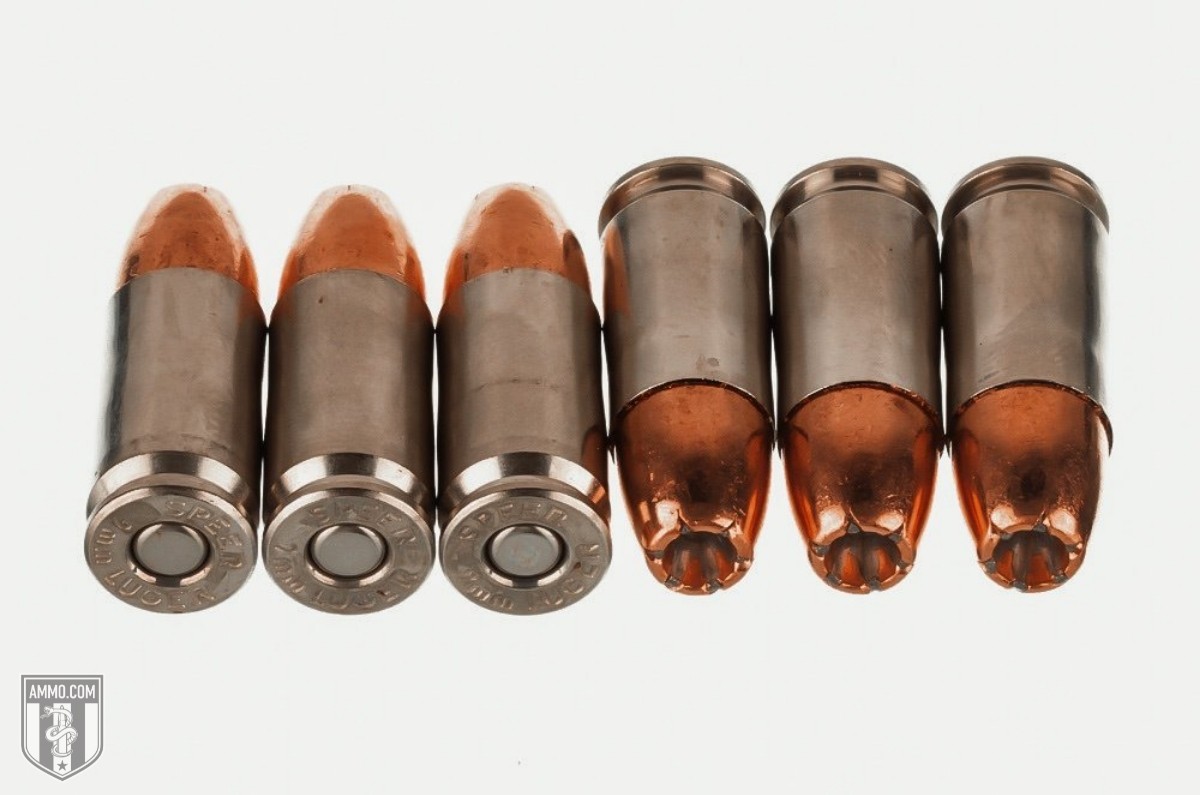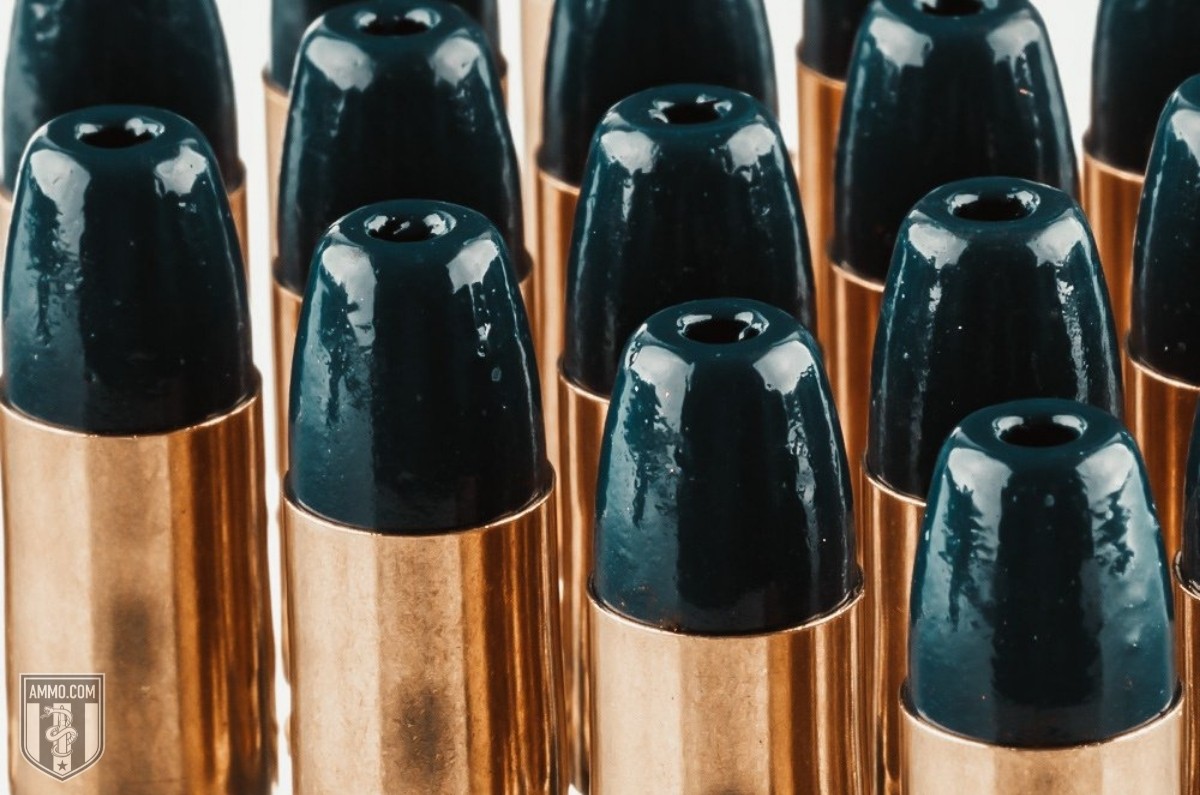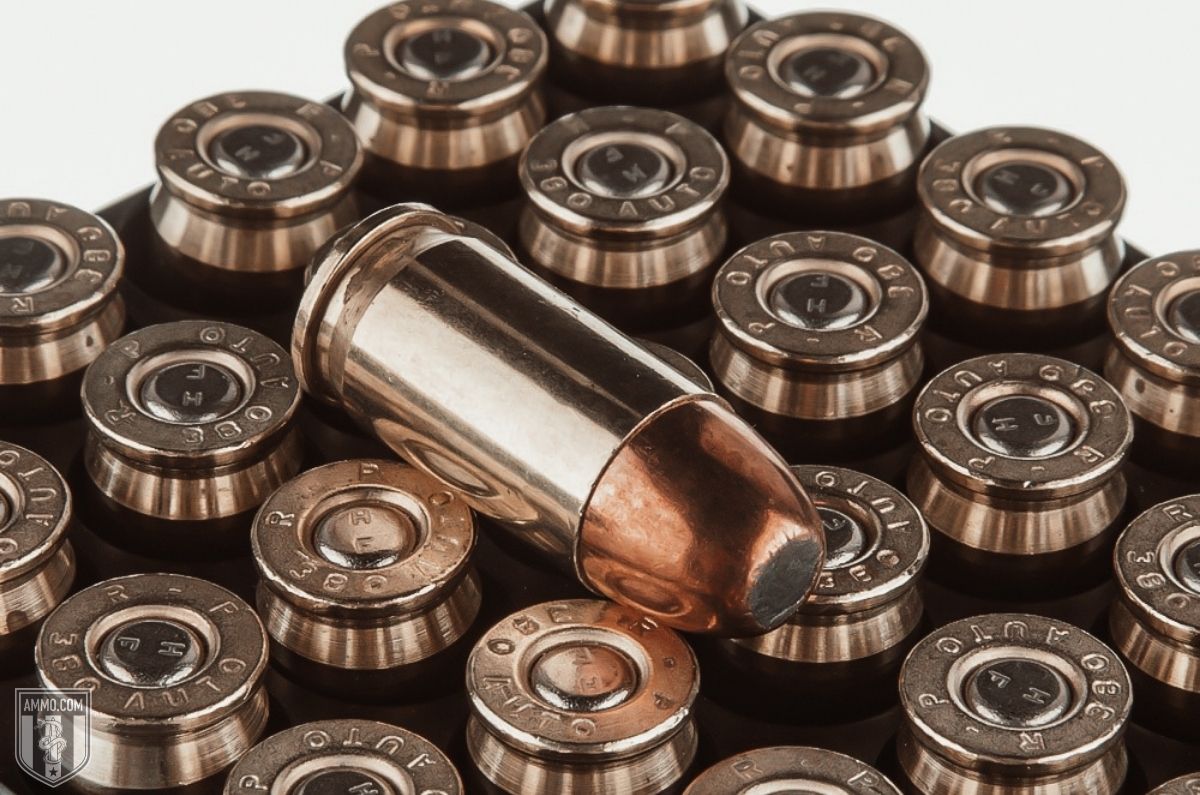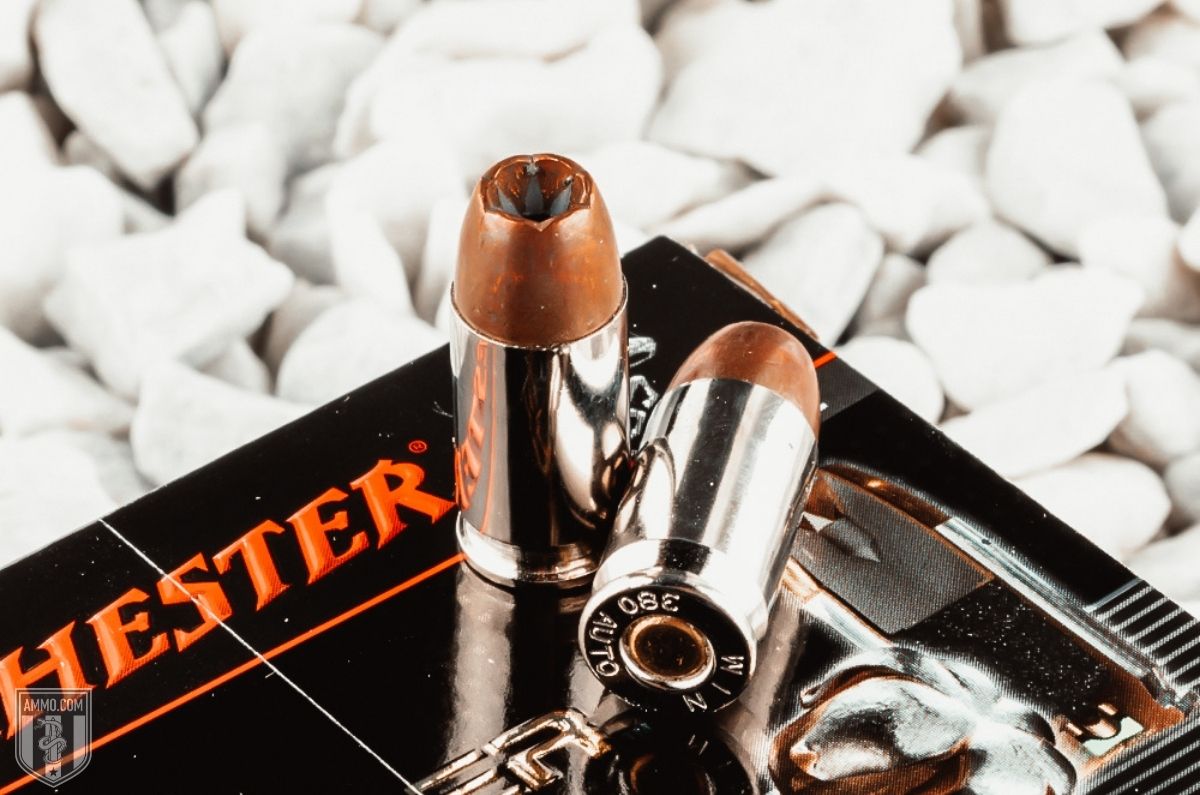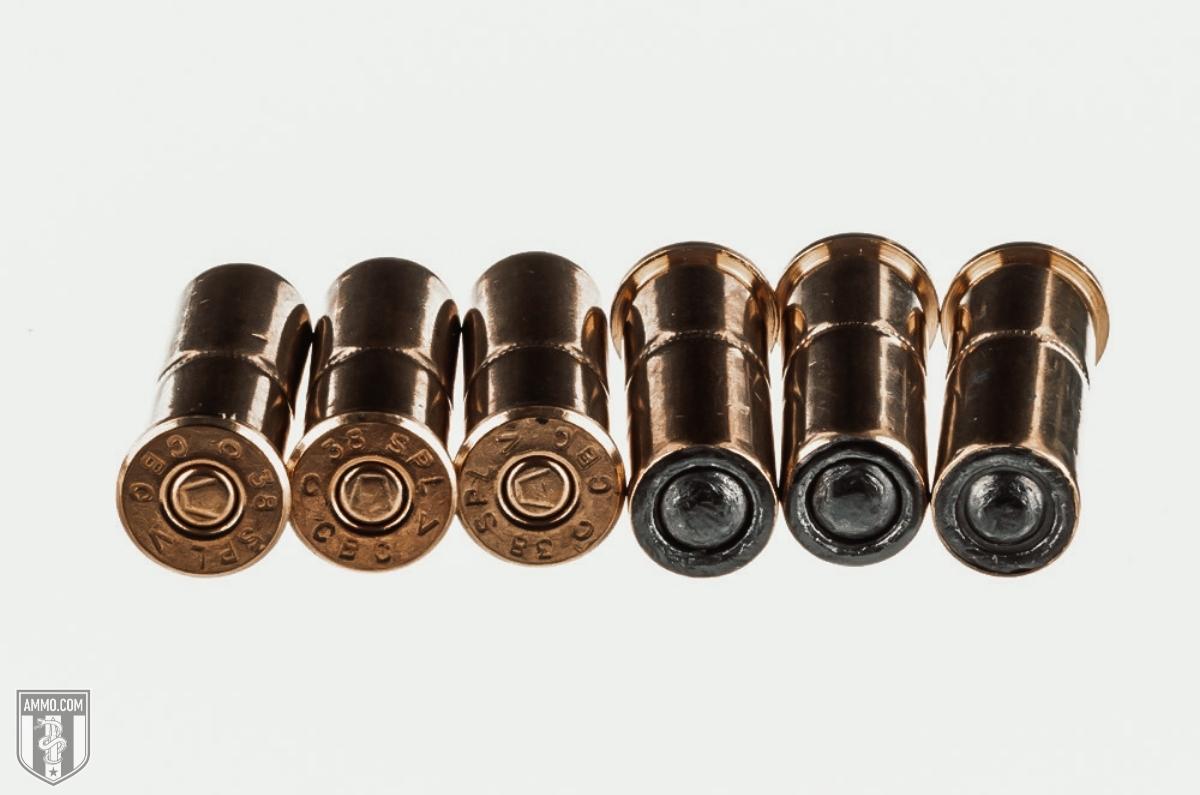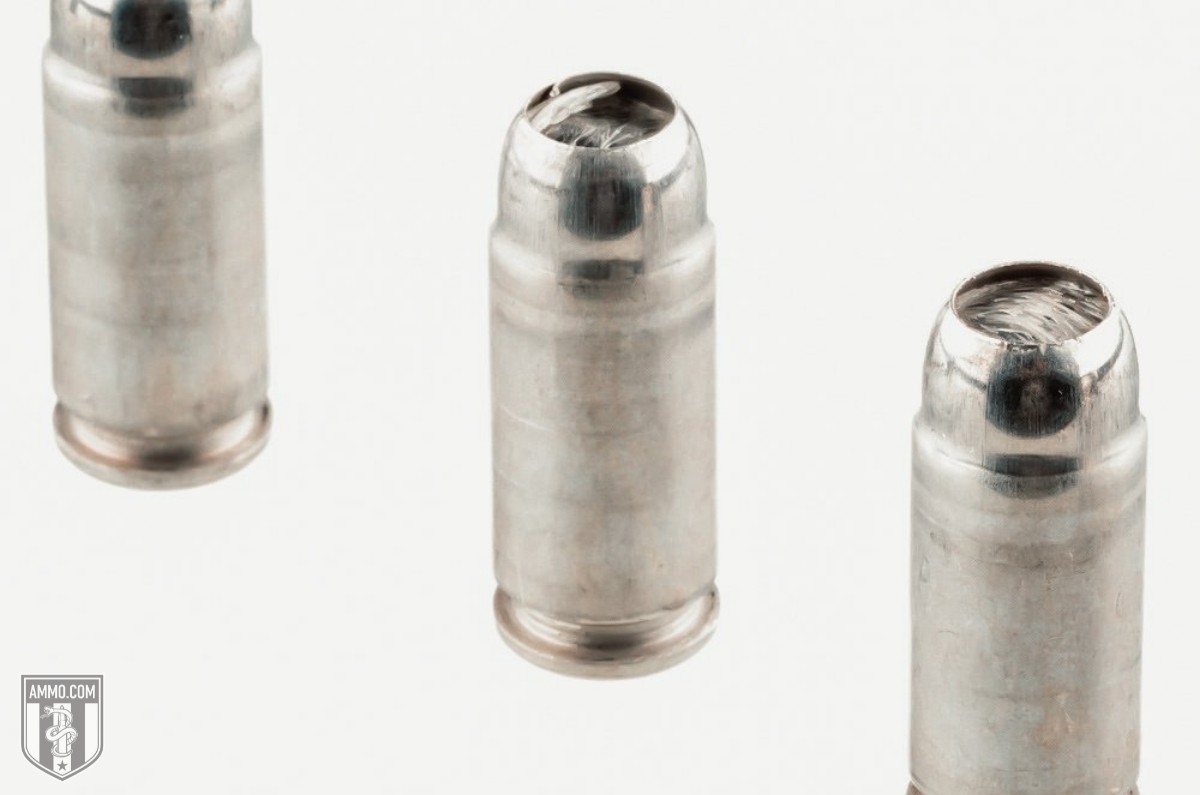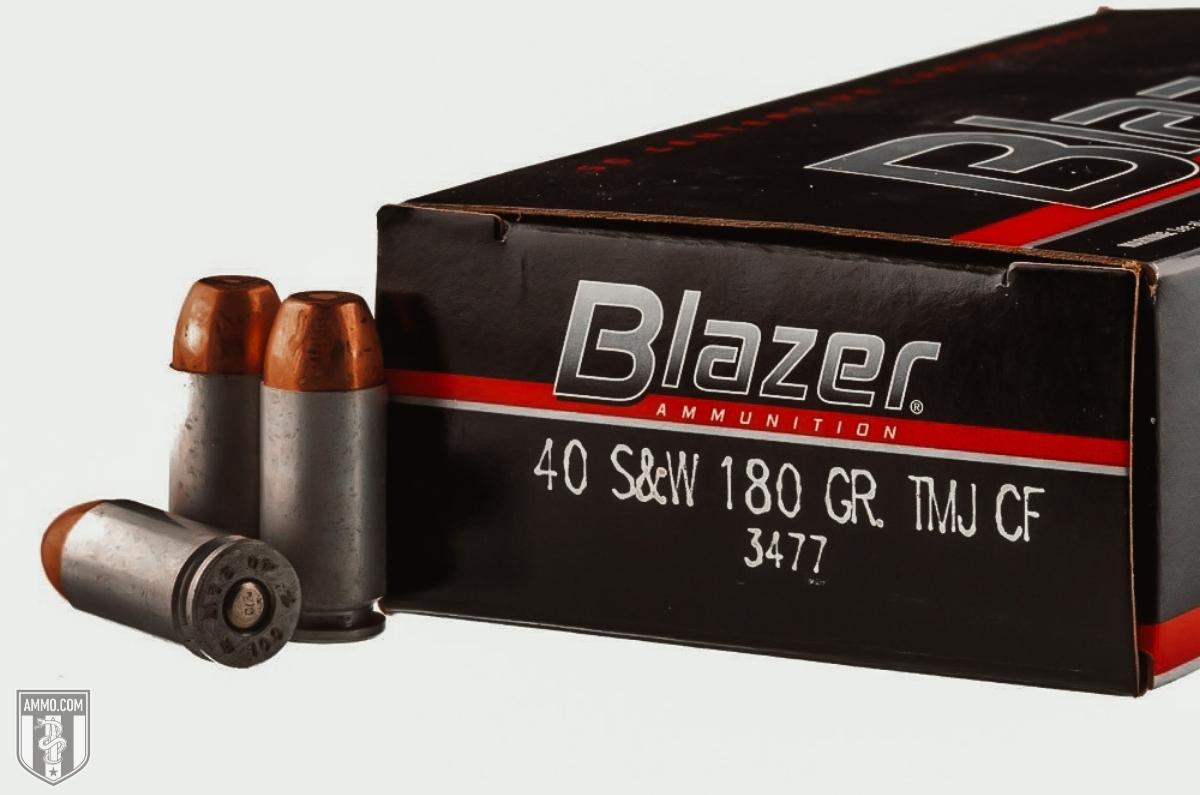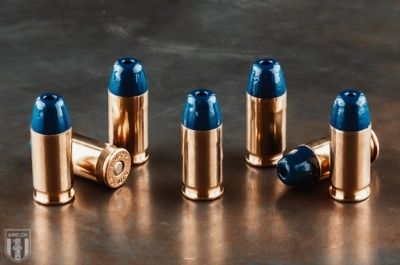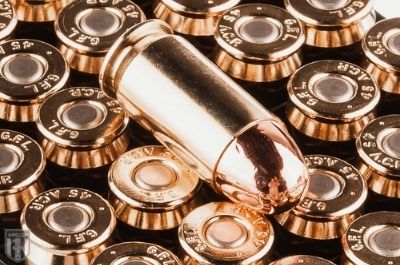Best Cartridge for Concealed Carry: Keeping It Under Wraps
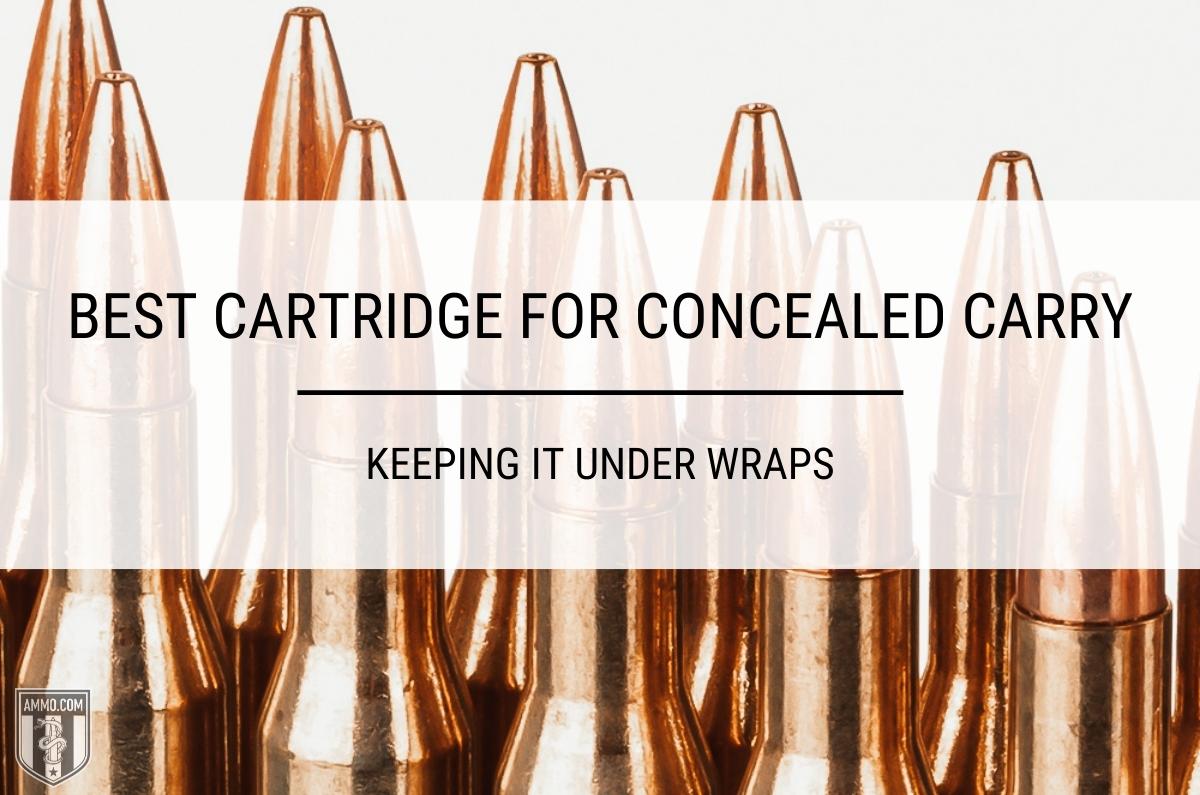
While every cartridge has the capability to stop a dangerous threat, some are just better at it than others.
In the end, the best caliber for concealed carry is one that does enough damage to quickly eliminate a threat. It also needs to be loaded in a gun you can shoot well when you need it to, but keep reasonably well hidden under clothing until then.
Choosing the Best Cartridge for Concealed Carry
Finding the right cartridge/handgun combo for concealed carry isn’t as easy as one might think. What works well for one concealed carrier may not work at all for another.
Choosing a CCW is mostly about finding the right balance of power, "shoot-ability," and concealment. That balance point is influenced by the individual shooter’s body type, strength, experience level, and personal wardrobe choices.
The 9mm Luger is currently the most popular cartridge for concealed carry in the U.S. It is also our top pick. Although 9mm Luger works well for the vast majority of shooters, it doesn’t work for everyone all of the time.
Self-defense is a very personal issue. No one other than you should decide which cartridge you should use. This article is only intended to help you weigh the pros and cons of several options, and take you one step closer to making an informed decision about what to carry.
9mm Luger - Our Top Pick
Although it was once considered “too little gun” for defensive shooting, modern technology has brought the 9mm Luger a long way over the course of just a couple of decades. Today, 9mm is the most popular CCW cartridge on the market. It is widely used by law enforcement and civilians alike.
Energy and Penetration
Advancements in bullet and ballistics technology have moved the 9mm Luger up from the “underpowered” category and made it a viable option for neutralizing threats.
Although the 9mm shoots a smaller projectile than larger calibers like the .40 S&W and .45 ACP, the differences in wound diameters between these three cartridges are nominal. Many 9mm home defense loads feature hollow points that expand up to twice their original diameter.
9mm is sometimes criticized for its capability as a self-defense load because larger calibers fire heavier projectiles and carry more kinetic energy (which is often construed as “stopping power”). But what the smaller 9mm lacks in weight, it more than makes up for with velocity.
9mm bullets zip from the muzzle at around 300 fps faster than projectiles fired from a .45 ACP. Velocity has a major effect on kinetic energy. If you double a bullet’s velocity, its energy quadruples. The extra speed behind the 9mm doesn’t quite even the energy score, but it definitely improves terminal performance.
The real question here isn’t whether 9mm has more “stopping power” than larger calibers. That answer will always be “no”.
But does the 9mm have sufficient energy for self-defense? Absolutely.
Recoil
Perhaps the 9mm’s best selling point is its relatively light recoil.
The effects of recoil on shooter accuracy, especially in a high-adrenaline, life-or-death situation shouldn’t be overlooked. Because the 9mm’s recoil is relatively easy to control, shooters can get more bullets on target faster, which is essential to neutralizing a threat before it can become worse.
Shooting 115 grain loads from a 1 ½-pound 9mm pistol produces a relatively mild 5.2 foot-pounds of recoil. All but the most recoil-sensitive shooters should be able to handle this mild-mannered cartridge.
Concealment
9mm handguns come in a variety of shapes and sizes, ranging from subcompact to full-size. Smaller pistols are obviously easier to conceal. However, the recoil on the lightest handguns can be a bit on the snappy side, which can make follow-up shots more problematic.
Magazine Capacity
Because there is so much variety in the world of 9mm handguns, magazine capacity also varies greatly. Choosing a smaller model will always cost you capacity. However, smaller models are obviously easier to conceal.
Cost and Availability
Because 9mm is the most popular concealed carry cartridge on the market today, there are tons of gun and ammo options to choose from.
Every major ammo manufacturer produces multiple 9mm loads in all their popular target and self-defense lines.
There is also a vast selection of firearms chambered for this popular handgun caliber. You can choose from easy-to-conceal subcompact options (like the single-stack Glock 43) to full-size pistols (like the Springfield XD) that are easier to fire but much harder to conceal.
The polymer Glock 19 is currently the most popular 9mm pistol in current production. Although this model is considered a compact pistol, its size can be difficult for smaller-framed shooters to effectively conceal.
Other popular 9mm concealed carry handguns include the Smith & Wesson M&P Shield, the SIG P365, and the Springfield Hellcat.
.380 ACP
Designed by John Moses Browning in 1908, the .380 ACP (Automatic Colt Pistol) cartridge is basically a shorter version of the popular 9mm Luger. A standard 9mm round measures 1.169" long, whereas the .380 ACP's overall length measures 0.984" (0.185" shorter).
Energy and Penetration
Because the .380 Auto case is shorter than the classic 9mm (0.680", as opposed to 0.754"), there is less room to pack in propellant. That means the .380 has a lot less oomph behind it.
The .380 ACP pushes 90 grain hollow points from the muzzle at an average velocity of 1,000 fps, with 200 foot-pounds of energy. That is modest compared to the muzzle velocity (around 1,135 fps) and muzzle energy (355 foot-pounds) of the 9mm's middleweight 124 grain projectile.
Critics of the .380 ACP claim it doesn’t have enough “stopping power” for personal defense. However, with modern defensive loads and careful shot placement, the .380 Auto can be a highly capable round.
Because 9mm and .380 fire the same diameter projectiles, the widths of the wound channels they create are comparable.
Recoil
Compared to any of the other cartridges on this list, the .380 ACP’s recoil is an absolute pussycat. With only the mildest felt recoil, this cartridge is often the best option for weak, disabled, or recoil-sensitive shooters.
Concealment
Smaller cartridges are genuinely easier to conceal, and the .380 Auto is one of the smallest self-defense options on the market today. Pistols chambered in .380 ACP are generally compact, lightweight, and perfect for all-day EDC.
The .380 Auto is a popular chambering for pocket pistols, so if you’re looking for an option for spy-level deep concealment, this is it. The perfect size for an ankle holster or pocket carry (for safety, always use a proper holster), .380 pistols make a great backup partner for full-size pistols.
Magazine Capacity
.380 ACP pistols are small guns, which means they don’t hold a surfeit of ammo. Most models only hold 6 or 7 rounds, which means you’ll need to make every trigger squeeze count.
Its low round count is another reason many defensive shooters consider .380 ACP as a backup option rather than a primary weapon.
Carrying an extra magazine (and having the skills to change it under duress) is wise.
Cost and Availability
Because .380 Auto rounds are usually harder to find than 9mm, expect to pay a few extra pennies per round.
Popular concealed carry guns chambered in .380 Auto include the Glock 43, the Walther PPK, the SIG Sauer P238, and the Ruger LCP.
.38 Special
Developed by Smith & Wesson in 1898, the .38 Special was the standard law enforcement cartridge for more than 60 years. Although this cartridge has been largely usurped by newer options engineered for semi-automatic handguns, the .38 Special remains the default cartridge for self-defense revolvers.
Energy and Penetration
9mm Luger and .38 Special cartridges are both topped with bullets of virtually identical diameter (0.355" vs. 0.357"). However, there’s a lot less power behind bullets coming from the .38 Special.
The .38 Special’s case was originally designed to hold black powder. It simply can't handle the higher pressure a full dose of modern smokeless propellant would produce. For that reason, these wheelgun cartridges have a SAAMI pressure specification of 17,000 psi. In contrast, the 9mm Luger has a SAAMI rating of 35,000 psi.
The .38 Special is a low-pressure, low-velocity cartridge, so it doesn’t carry the same kinetic energy or penetrate as deeply as 9mm loads. While wound channels will be shallower than those delivered by 9mm, the .38 Special is less likely to pass clean through a threat, which is a good thing if you ever have to draw your snub nose in a populated area.
Recoil
The .38 Special produces even less recoil than the 9mm Luger, which is why it is a popular option for women, new shooters, and people who are recoil-sensitive.
Concealment
A small, lightweight J-frame snub nose revolver chambered in .38 Special is one of the easiest handguns to conceal, especially if you opt for a snag-free “hammerless” model.
One of the main drawbacks to small revolvers is that they are difficult to reload, especially in a high-adrenaline defensive situation.
Magazine Capacity
Because most .38 Special CCWs are wheel guns, capacity is limited to five or six rounds.
Cost and Availability
The .38 Special is almost exclusively a revolver cartridge, which seriously limits your handgun selection. In some cases, your options may be limited to secondhand firearms.
.357 Magnum
The .357 Magnum was designed by packing more powder into the case of a .38 Smith & Wesson Special cartridge. Sometimes called a “hot 38 Special,” the .357 Magnum was engineered for outdoorsmen, although it quickly caught on with law enforcement officers.
Energy and Penetration
Shooters sometimes snub the .38 Special claiming it is underpowered for today’s self-defense needs. The .357 Magnum addresses those concerns by adding an extra 400 fps and 150 foot-pounds of energy behind the same size bullets.
When loaded with quality hollow point bullets, the .357 Magnum works well for home defense and hunting medium game.
Recoil
The .357 Magnum's extra power comes at a price. No one would classify the .357 Magnum as a mild-recoiling cartridge – and the smaller you go in gun size, the harder the recoil becomes to control.
Choosing a lightweight snub nose with a barrel length under 4" is something akin to recoil torture. Unfortunately, larger revolvers are much harder to effectively conceal.
Concealment
Full size .357 Magnum revolvers are big and bulky and hard to conceal. Unfortunately, the smaller you shrink these revolvers, the more difficult they are to shoot.
Magazine Capacity
Obviously, revolvers don't have "magazine capacity." They have cylinders with chamnbers. Revolvers chambered for .357 Magnum are usually limited to five or six chambers.
Cost and Availability
As with .38 Special, your handgun options for .357 Magnum are mostly limited to revolvers. You could theoretically carry a semi-automatic like the Desert Eagle, though these are widely viewed as impractical for defense.
.357 Magnum ammo runs on the pricey side, so you may want to buy your rounds in bulk.
If you want to practice on the cheap, .357 Magnum wheel guns can also safely fire lcheaper .38 Special loads. However, the reverse is NOT true. You can not safely fire .357 Magnum ammo in a .38 Special revolver.
.40 Smith & Wesson
The .40 S&W was developed following the infamous 1986 FBI Miami shootout that left two FBI agents dead and another five injured. The agents had been outgunned by two bank robbers armed with two .357 Magnum revolvers, a Ruger Mini-14, and a shotgun.
The FBI's demand for a better handgun cartridge led to the development of the 10mm Auto. The FBI ultimately deemed the .40 caliber round's recoil excessive, and adopted a shorter, weaker variant which eventually became known as the .40 S&W.
The .40 S&W caught on quickly with both law enforcement and civilian shooters. While this cartridge was insanely popular for several decades, it now appears to be gradually falling out of favor. As the performance of the 9mm Luger has improved with better bullet technology, more and more shooters are moving from .40 S&W to the smaller 9mm.
Energy and Penetration
When it comes to velocity and energy, the .40 S&W sits almost exactly between the 9mm Luger and .45 ACP.
While the in-flight ballistics of the 9mm and .40 S&W are extremely similar, they begin behaving very differently on impact. The .40 S&W hits with far more energy. That energy drives the bullet deeper into soft tissue, producing a larger and more injurious wound channel as a result.
Recoil
The 40 S&W's kick is significant. The objective recoil from a 1.5-pound 9mm pistol firing a 115 grain bullet is 5.2 foot-pounds. In contrast, a 155 grain bullet exiting a 1.5-pound .40 S&W pistol produces 10.6 foot-pounds of recoil energy. That means the .40 S&W kicks more than twice as hard as a 9mm pistol of the same size.
Many shooters claim that the recoil produced by a .40 S&W makes it more difficult to control than the larger .45 ACP. Some of that can be chalked up to .45s being heavier pistols (the added weight helps absorb some of the recoil.
The numbers definitely support that claim. A 2.5-pound .45 ACP pistol firing a 185 grain hollow point produces 6.8 foot-pounds of recoil energy: significantly less than the 10.6 foot-pounds of recoil from a .40 S&W.
Even in full-size pistols, the .40 S&W’s recoil can be pretty snappy. It also has significant muzzle rise, which can make getting back on target and making fast, accurate follow-up shots trickier.
Concealment
Bigger cartridges usually mean bigger handguns, and bigger handguns are more difficult to conceal. However, the .40 S&W gets you closer to big bore power without having to tote around a hulking buzzer.
Magazine Capacity
Most pistols chambered in .40 S&W have adequate magazine capacity for most defensive scenarios. However, larger cartridges do take up more space in a magazine. A .40 S&W pistol usually holds fewer rounds than a 9mm pistol of comparable size. On the other hand, a compact .40 S&W pistol holds a few extra rounds compared to a compact pistol chambered for the beefier .45 ACP.
Cost and Availability
As law enforcement and defensive shooters continue abandoning the .40 S&W, handgun options are slowly dwindling. That means second-hand pistols chambered for this cartridge may be more abundant than factory-fresh options. However, Glock is still rolling out plenty of pistols (including the popular compact G23), so that may be a good sign that the .40 S&W will remain available for some time to come.
While .40 S&W ammunition may not be as prevalent as it was a few decades ago, it hasn’t completely disappeared. Every major ammo manufacturer is still rolling out loads in all their major defensive lines.
Because .40 S&W cartridges require more raw materials to produce than smaller caliber options, ammo is generally more expensive. The lower demand for this cartridge also drives up pricing, so expect to spend several cents more per round.
.45 ACP
The .45 Automatic Colt Pistol (more commonly called .45 ACP or .45 Auto) was a preferred carry round for military and law enforcement personnel for almost a century. The cartridge was developed by John Moses Browning to go along with his now iconic 1911 semi-auto pistol.
Energy and Penetration
Although the .45 ACP produces lower velocities than the 9mm Luger, its heavier projectiles deliver more on-target energy.
Another big advantage the .45 ACP has over the other cartridges on this list is expansion.
The .45 Auto's .45 caliber bullets are pretty large – almost one-tenth of an inch wider than 9mm projectiles. Quality defensive bullets can expand up to twice their original diameter whilst penetrating soft tissue. The result is massive wounds, more blood loss, and more pain, all of which are critical elements in neutralizing a determined threat.
Recoil
Although the .45 ACP features big, beefy bullets, it isn’t all that hard to fire. However, this isn’t the cartridge for recoil-sensitive shooters. Expect significantly more recoil energy from the .45 ACP than from smaller rounds.
Concealment
A standard-size pistol chambered in .45 ACP is going to be much bulkier and more difficult to conceal than a 9mm pistol. However, the .45 ACP is about as large as you can go on the caliber spectrum and still have a handgun you can adequately conceal.
Magazine Capacity
A significant trade-off for the .45 ACP’s “stopping power” is its lower magazine capacity. The venerable Colt M1911 only holds 7 +1 rounds. Many semi-auto pistols chambered in .45 ACP that are designed for concealed carry have a single-stack magazine, which is limited in capacity. Double-stack pistols may hold up to 10 rounds, but their thicker grips make them harder to conceal under clothing.
Cost and Availability
.45 ACP ammo is typically more expensive than 9mm Luger – sometimes up to twice as much per round. However, it isn’t nearly as pricey as big revolver loads like .44 Magnum.
Buying in large quantities is a wise decision. Take a look at our extensive selection of bulk 45 ACP ammunition and see for yourself!
Final Thoughts
We firmly believe that 9mm Luger is the best cartridge for concealed carry for the widest range of shooters. It delivers adequate power and ballistics, has mild recoil, and gives you the option of carrying one of a wide variety of handguns.
However, 9mm isn’t perfect for every concealed carrier. Ultimately, the best concealed carry handgun is the one you can shoot proficiently and carry with confidence. For some shooters, that might be a .38 Special. Others might feel more confident with a .45 ACP in their holster.
Cartridge Recommendations
- Best Caliber for Deer Hunting
- Best Big Game Caliber
- The 10 Best Coyote Cartridges
- Best Cartridge for Elk Hunting
- Best Cartridge for Self-Defense
- Best Cartridge for Concealed Carry
- Best Handgun Cartridge
- Best Moose Cartridges
- Best 40 S&W Ammo For Self Defense & Target Practice
- Best 223 Ammo
- Best .44 Magnum Ammo
- Best Shotgun Shell Types for Home Defense & Hunting
- Best 270 Ammo for Hunting
- Best 17 HMR Ammo for Varmint Hunting and Plinking
- Best 22 Rimfire Ammo
- 4 Best AK-47 Ammo Picks [7.62x39]
- Best 38 Special Ammo for Self Defense
- Best Handgun Ammo for Self-Defense in Common Calibers
- Best 308 Ammo For Hunting & Target Shooting
- Best 300 Win Mag Ammo
- Best 243 Ammo for Target Shooting
- 10 Best 6.5 mm Cartridges For Long-Range Shooting and Hunting
- Best 45 ACP Hollow Points for Self-Defense
- Best 12 Gauge Ammo for Home Defense
- Best 32 ACP Ammo for Your Pocket Pistol or Backup Gun
- Top 13 Best AR Calibers That Aren’t 5.56 NATO
- Best Ammo for Smith and Wesson M&P 9mm Shield
- Best 7.62x39 Ammo for Self Defense
- Best 20 Gauge Ammo for Home Defense, Whitetail, and Upland Game
- Best Ammo for 1911 45 ACP
- Best 12 Gauge Ammo for Deer Hunting
- Best .40 S&W Ammo for Self Defense
- Best 7.62x39 Hunting Ammo
- Best 5.56 Ammo for Home Defense
- Best 380 Self-Defense Ammo
- Best 45 ACP Ammo for Every Situation
- Best Ammo for Glock 43x
- Top 5 Best 22 WMR Ammo on the Market
- Best Ammo for Glock 19
- Best Sniper Ammo
- Best 38 Special Ammo For Target Practice Precision Shooting
- Top 5 Best 45 ACP Ammo for Target Practice
- Best 6.5 Creedmoor Hunting Ammo
- Top 10 Best Sniper Rifle Cartridges
- Best 6.5 Grendel Ammo
- Best 5.45x39 Ammo for Your Gun
- Best 10mm Ammo for Bear Defense
- Best 350 Legend Ammo
- Top 5 Best 30-06 Ammo for Deer Hunting
- Best 30-06 Ammo for Accuracy
- Best 300 Win Mag Ammo for Deer
- Best M193 Ammo for Stockpiling
- Best 300 Blackout Ammo for a 7.5" Barrel
- Best Shotgun Shells for Target Practice
- Best 45 ACP for Bear Defense
- Best 223 for Deer Hunting
- Best Exotic 9mm Ammo
- Best Duck Hunting Shells
- Best .357 SIG Defensive Ammo
- Best Beretta APX 9mm Ammo
- Best 22 Pistol Ammo
- Best 9mm Ammo
- Best 308 Ammo for Deer Hunting
- Best Ammo for the Taurus GX4
- Best Ammo For Taurus PT111 G2
- Best Shells For Trap Shooting
- Best 38 Special Ammo for Snubbies
- Best 410 Ammo For A Taurus Judge
- Best Ammo for Ruger Security 9
- Best Ammo for Taurus G3c
- Best 7mm Rem Mag Ammo
- Best Lead-Free Hunting Ammunition
- Best 300 Blackout Ammo for Hog Hunting
- Best 9mm Home Defense Ammo
- Best 10mm Ammo for Every Shooting Situation
- Best .22 LR Ammo for Self-Defense
- Best Long-Range Hunting Bullets
- Best 357 Magnum Ammo For Every Shooting Situation
- Best 45 ACP Ammo For Self-Defense
- Best 6.5 Creedmoor Ammo For Accuracy
- Best 45-70 Ammo For Hunting & Target Shooting
- Best Turkey Loads
- Deadliest Shotgun Ammo For Home Defense
- Best 300 Win Mag Ammo For Elk Hunting
- Best 9mm Subsonic Ammo
- Best 7mm PRC Ammo
- Best 300 Blackout Subsonic Ammo
- Best 308 Subsonic Ammo for Hunting
